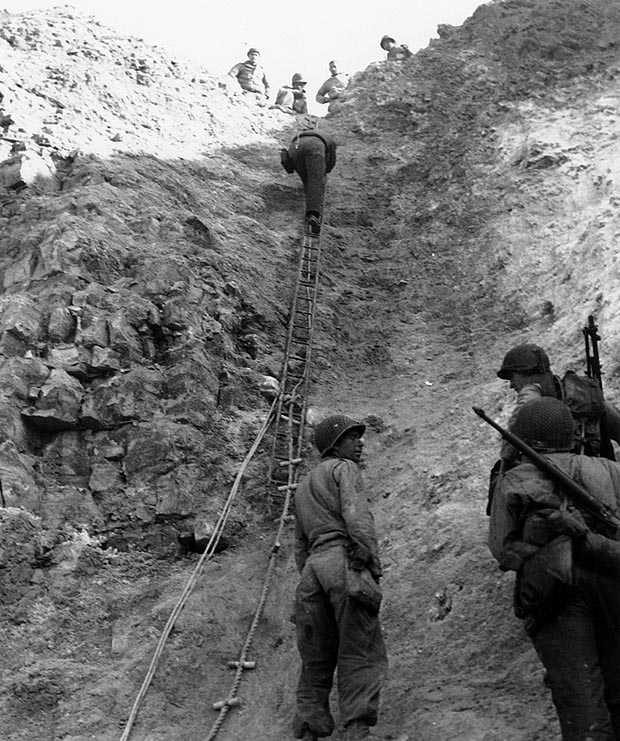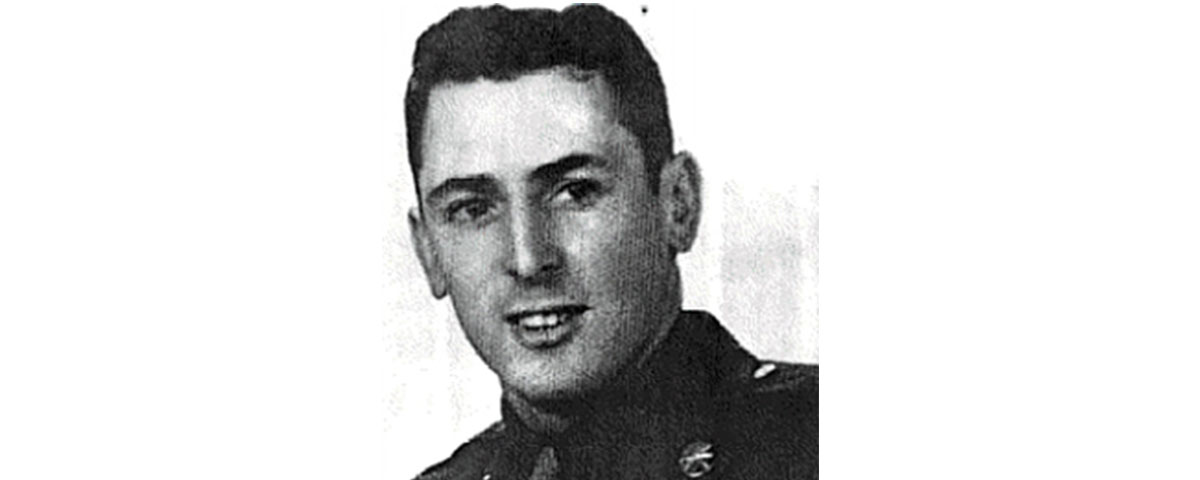Leonard G. ‘Bud’ Lomell is a legend among U.S. Army Rangers. Inducted into the Ranger Hall of Fame in 1994, he is one of the key heroes of the D-Day landings at Normandy, France, and is the subject of a chapter in Tom Brokaw’s popular book The Greatest Generation.
Born in Brooklyn, N.Y., in 1920, Lomell was adopted as an infant by an immigrant family from Scandinavia. He attended Tennessee Wesleyan College on an athletic scholarship, lettered in football and was an exceptional boxer. He enlisted in the Army in 1942 and, after serving with the 76th Infantry Division, volunteered for Ranger training.
On the morning of June 6, 1944, 1st Sgt. Lomell was an acting platoon leader in Company D, 2nd Ranger Battalion. Companies D, E and F approached the 100-foot cliffs at Pointe du Hoc from the sea, and as the ramp of Lomell’s landing craft dropped, a machine-gun bullet smacked into his side. Regardless, he was among the first Rangers to reach the cliff top.

The Rangers’ primary mission was to neutralize a battery of five 155mm guns on the plateau atop the cliffs. In anticipation of an invasion, the Germans had sited the guns to fire on Utah and Omaha Beaches. They were captured French mobile field artillery pieces, emplaced in reinforced concrete casemates and mounted on their field carriages, thus enabling their crews to quickly pull them from the casemates and move them as necessary. As Allied bombers pounded Pointe du Hoc in preparation for the landings, that’s exactly what the German gun crews did.
Finding the casemates empty, Lomell immediately led a patrol inland several hundred yards to secure the Rangers’ secondary objective, a coastal road the Germans could use to move reinforcements between the two landing beaches. Upon reaching the unpaved road, Lomell and Staff Sgt. Jack Kuhn noticed heavy tire tracks. Following them, the Rangers soon found all five guns under camouflage in a nearby orchard, emplaced to fire toward Utah, with ammunition stacked nearby. Fortunately, the gun crews were elsewhere under cover.
With Kuhn providing cover, Lomell jammed thermite grenades into the elevating mechanisms of two of the pieces and smashed another’s sights. The intense heat from the grenades melted and fused the gears, making them inoperable. Lomell then retrieved more thermite grenades and neutralized the remaining guns. Meanwhile members of Company E detonated the 155mm ammunition with a tremendous explosion.
For his heroic actions and leadership at Pointe du Hoc, Lomell received the Distinguished Service Cross and a battlefield commission. Six months later, while serving with Company D during the fighting in Germany’s Hürtgen Forest, Lomell again proved his mettle. After participating in the capture of a key German position atop Hill 400 —and despite being severely wounded—Lomell commanded the defense of the hill against five fierce counterattacks. Lomell was awarded a Silver Star for that fight, although he didn’t receive it until 2007.
Wounded a third time, during the Battle of the Bulge, Lomell returned to the States and was honorably discharged from the Army in December 1945. He went to law school on the G.I. Bill and then founded and headed his own firm. He retired from practice in the mid-1980s.
I had the honor of meeting Bud Lomell on June 6, 2004, when I served as the commander of all U.S. forces supporting the D-Day 60th anniversary commemoration events. He and five other surviving Rangers were the guests of honor at the Pointe du Hoc ceremony. I told him that as a military historian I had promised myself that if I ever met him, I’d ask him about Hill 400. He gave me a quizzical look, then simply said, “Hill 400? Oh, that was the worst day of my life!”
Originally published in the May 2012 issue of Military History. To subscribe, click here.





